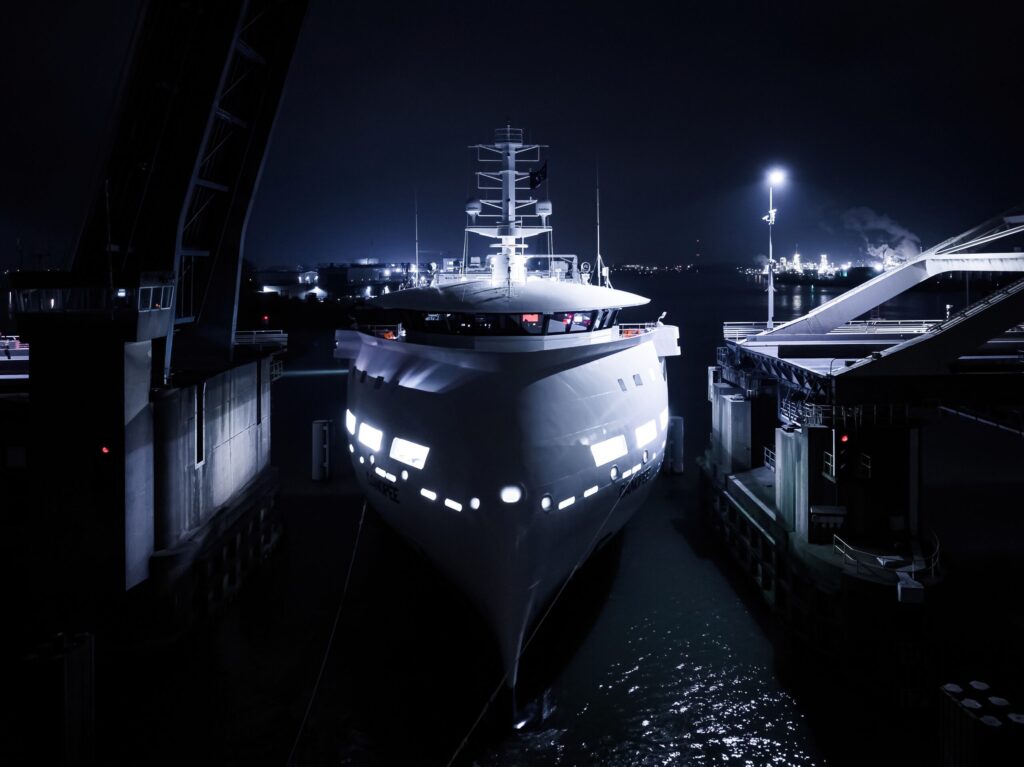Two years ago, Canopee, a pioneering hybrid cargo ship designed to transport components for the Ariane 6 rocket, set sail on a mission that many called ambitious—if not risky. Powered in part by OceanWings, an advanced wind-assisted propulsion system, Canopee was tasked with proving that the timeless force of the wind could play a credible role in the future of commercial shipping.

Today, that gamble has paid off.
Wind, Data, and a Vision for the Future
Operated by Alizés—a joint venture between Jifmar and Zéphyr & Borée—Canopee has spent the past two years traveling transatlantic routes between Europe and French Guiana, carrying highly sensitive aerospace cargo. Despite this challenging mission, performance has exceeded expectations across every key metric: fuel efficiency, operational reliability, and integration into standard maritime routines.
At the heart of its success is OceanWings, a smart, automated wingsail system designed by French innovators with a mission to bring wind back to shipping—only this time, supported by modern technology and AI optimization.
Canopee features four wingsails, each capable of delivering 1.3 tons of daily fuel savings—the equivalent of 300 kW of engine power per sail. On average, the ship has reduced over 5 tons of fuel per day, which translates into more than 20 tons of CO₂ emissions avoided daily. On some voyages, thanks to intelligent routing and real-time optimization software, fuel savings climbed to 2.2 tons per wingsail, per day.
More Than Just Fuel Efficiency
While environmental performance is critical, Canopee’s real achievement lies in proving that innovation and reliability can coexist. During numerous crossings, the vessel has cruised at nearly 14 knots using wind power alone, confirming the OceanWings system is not only effective but robust and easy to operate, even under demanding logistical conditions.
The success of the program has not gone unnoticed. In 2024, Canopee was awarded the Henri Kummerman Prize by the French Académie de Marine, a recognition that cements its place as a trailblazer in next-gen shipping.
Space Cargo Meets Green Tech
Specifically designed to transport sensitive components for the European Space Agency’s Ariane 6 rocket, Canopee needed to meet exacting standards. Measuring 121 meters in length and 22 meters in beam, the vessel accommodates a crew of 22 people and is equipped with two 3,480 kW engines—providing hybrid power alongside its sails. The OceanWings system, featuring masts standing 36 meters tall, spreads over 363 square meters of aerodynamic surface area.
Completed by Neptune Marine in late 2022 and launched officially in 2023, Canopee is no longer a bold experiment. It is a working proof of concept, and a model for the kind of low-emission, high-performance shipping that aligns with the maritime industry’s future.
A New Horizon for Wind-Assisted Shipping
Canopee’s two-year performance report sends a clear signal to shipowners, shipbuilders, and policy-makers alike: wind is not a relic—it’s a resource. With OceanWings and smart hybrid integration, wind-assisted propulsion is now a viable commercial solution, not just an environmental ideal.
As more cargo vessels and even yachts begin to adopt sail-based or hybrid propulsion technologies, Canopee will stand as a benchmark in green shipping innovation—a ship that not only moved critical aerospace components, but also helped move the entire industry forward.